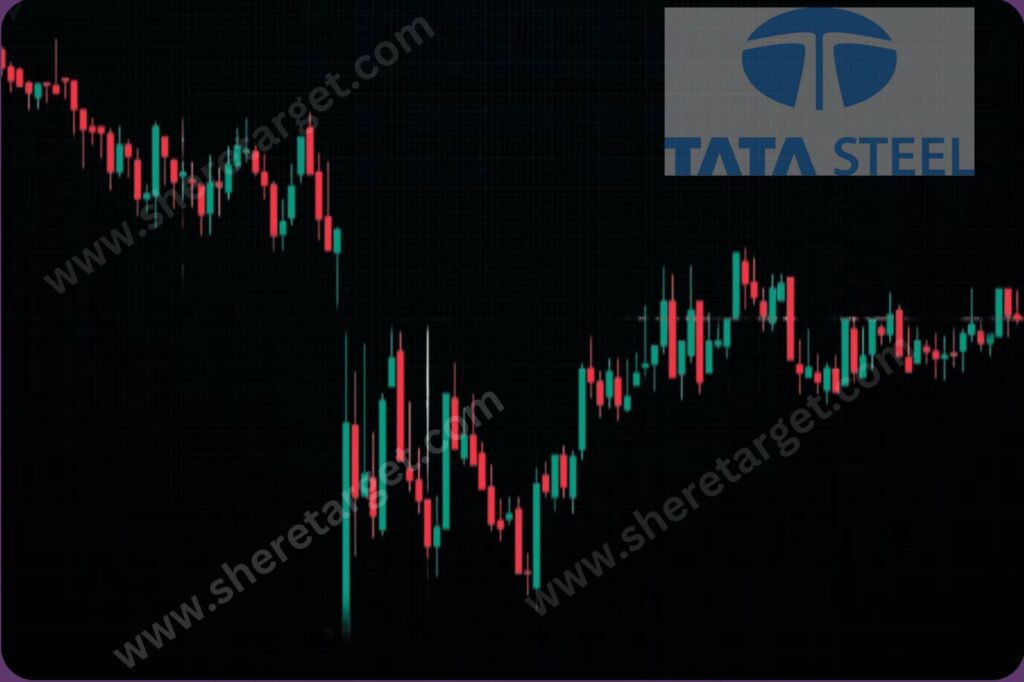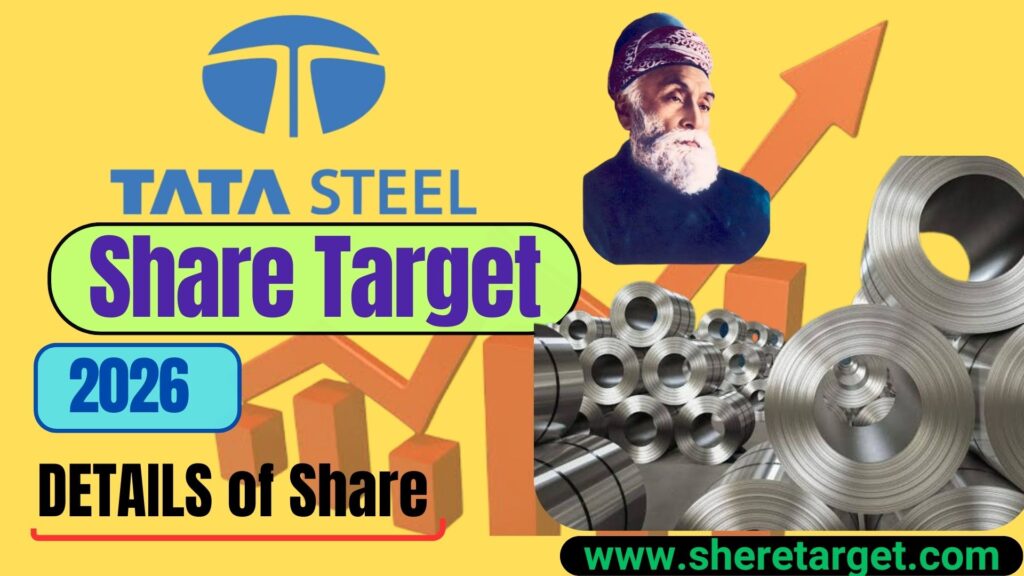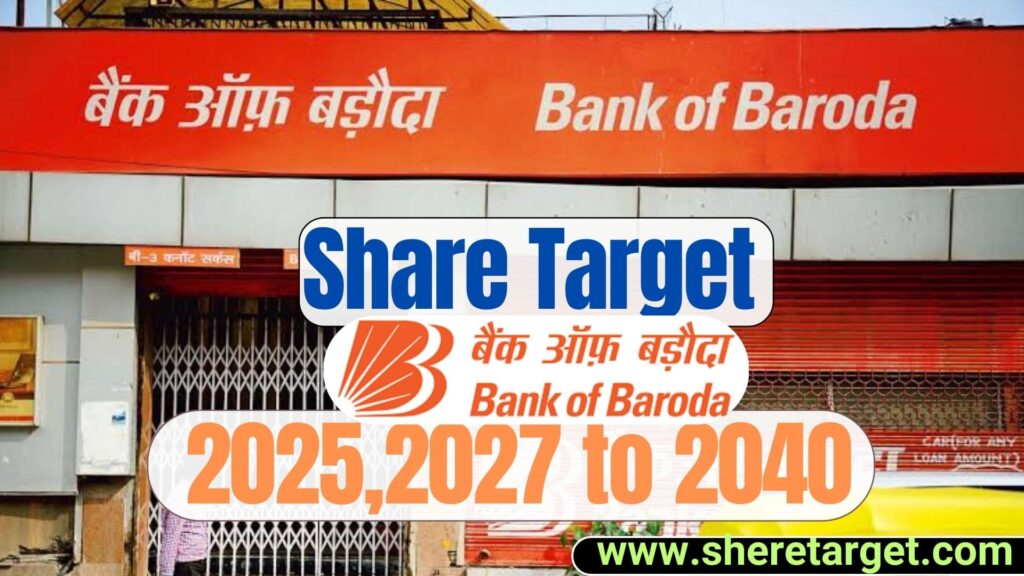Tata Steel Share Price Target 2026 is a bullish trend in the share market. During share ups and downs, you should know all about the share details before investing. In this blog, we are going to discuss the Tata Steel Price Target 2026. We will try to analyze the share base in the company’s overall performance.
We also look at the company’s profit growth in the last 5 years, the last 5 years’ sales growth, and the last 5 years’ ROE percentage. Similarly, we also compare the share growth, the share price return, amount whether the share has increased or decreased over the last 5 years. We also take advice from experts about when we should invest in the share, which may be helpful for you. Let’s have a look at the Tata Steel Share Price Target 2026.
What Is Tata Steel Limited?
Tata Steel Limited is Asia’s first and India’s largest private sector steel company. Tata Steel is among the lowest-cost producers of steel in the world and one of the select steel companies in the world that is EVA (Economic Value Added). Tata Steel is the world’s 6 the largest steel company with an existing annual crude steel production capacity of 30 million tonnes. The company has a balanced global presence in over 50 developed European and fast-growing Asian markets.
Overall Prediction Of Tata Steel Share Price Target 2026
Tata Steel Share Price Target 2026 forecast ₹165.38 to ₹188.42.
| Month | Tata Steel Share Price Target 2026 (1s Price Target) | Tata Steel Share Price Target 2026 (2nd Price Target) |
| January | ₹165.38 | ₹172.93 |
| February | ₹170.61 | ₹175.27 |
| March | ₹152.46 | ₹158.59 |
| April | ₹156.59 | ₹161.84 |
| May | ₹160.25 | ₹166.35 |
| June | ₹163.49 | ₹172.74 |
| July | ₹170.34 | ₹178.42 |
| August | ₹176.02 | ₹182.78 |
| September | ₹180.55 | ₹186.20 |
| October | ₹184.79 | ₹190.52 |
| November | ₹178.66 | ₹183.47 |
| December | ₹180.36 | ₹188.42 |
Also Read – Rama Steel Share Price Target
Influencing Key Factors Of Tata Steel Share Price Target 2026
- Digital Transformation
- At Tata Steel, the company’s driving business transformation is enabled by digital technologies, through digital interventions across its value chain. Cloud, Data, and Artificial Intelligence (AI) are the building blocks of Tata Steel’s digital transformation journey. The company made substantial investments to augment, computing and cybersecurity capabilities.
- E-Commerce Platform
- The company’s E-Commerce platforms, such as Aashiyana, DigECA, and Compass, provided alternate channels for driving sales and connecting customers. Through digital interventions, the company achieved a 30% reduction in customer complaint resolution time.
- Smart Asset Maintenance platform
- This platform is helping achieve higher cost, across equipment from mines to rolling mills, through enabled sensoration and building predictive analytics solutions. The company’s procurement 4.0 platform has enabled a 50% reduction in vendor reduction in vendor registration cycle time and a 20% reduction in order processing cycle time.
- Raw Material Mining and Processing
- Tata Steel is one of India’s most integrated steel companies with captive mines of iron ore and coal supplying to its manufacturing facilities. The highest standards of environmental managment are followed in mining locations while using the best available technologies.
- Steel Recycling Business
- As an initiative to be future-ready and establish the supply chain for scrap, the company set up the company’s recycling business in the financial year 2018-19. The first steel scrap processing unit was commissioned at Rohtak in Haryana, with an initial capacity of 0.5 MnTPA in the year 2020-21.
- One Supply Chain
- Tata Steel has a long, integrated value chain that extends from mining to finished steel products, with an interconnected network of suppliers, mines, ports, manufacturing locations, processing facilities, channel partners, and customers. The company’s Supply Chain functions into ‘One Supply Chain’, there is an increased focus on end-to-end margin management in raw materials and finished goods through synergies between hubs.
- Research & Development Infrastructure
- The company’s strong R&D team with specialisation in multiple fields has delivered on several projects in the domains of sustainability, cost reduction, and new project development. In the raw material space, the company focuses on reducing alumina in Iron ore and ash in coal without impacting yield.
Past History Of Tata Steel Share Price

| Time Duration | Price Percentage Ratio (Increased/Decreased) |
| The last 5 years | -0.87 (0.61%) |
| The last 1 month’s | +9.38 (7.03%) |
| The last 1 year’s | -21.05 (-12.85%) |
| The last 5 year’s | +115.45 (422.12%) |
The Last Few Years’ Fundamental Analysis Of Tata Steel Limited
| Amount | March 2024 | March 2023 | March 2022 | March 2021 | March 2020 |
| Book Value | 111.32 | 110.38 | 1,025.75 | 788.65 | 650.69 |
| Dividend | 3.62 | 3.62 | 51.01 | 25.75 | 10.21 |
| Net Profit Margin (%) | 3.41% | 12.23% | 26.10% | 20.65% | 11.63% |
| Return On Equity (%) | 3.50% | 11.52% | 26.85% | 20.45% | 11.20% |
| Return On Assets (%) | 1.99% | 6.69% | 14.96% | 9.86% | 4.50% |
Also Read – Castrol India Share Price Target
Risk Landscape and Mitigation Measures Of Tata Steel Limited
- Mitigation Strategies
- As domestic steel demand plunged due to COVID-19-induced lockdowns in the year 2021, sales were diverted for exports. New international markets were explored, which provided better net realisation. Tata Steel has invested in building a strong marketing franchise with well-regarded brands and a large network of dealers and retailers across the country.
- Information Security Risks
- The company focuses on enhancing the value chain’s digital footprint, including the customers, suppliers, and other stakeholders. Transition to remote working models and accelerated adoption of digital technologies have increased vulnerability to cyberattacks.
- Community Risks
- The company’s operations recognise a societal context shared with communities proximate to the company’s locations and are guided by a co-created aspiration of significant and lasting betterment in the well-being of the region. The company’s efforts have been recognised across national and global platforms, including the Government of India, Dun & Bradstreet, Confederation of Indian Industry, and BRICS Business Council.



